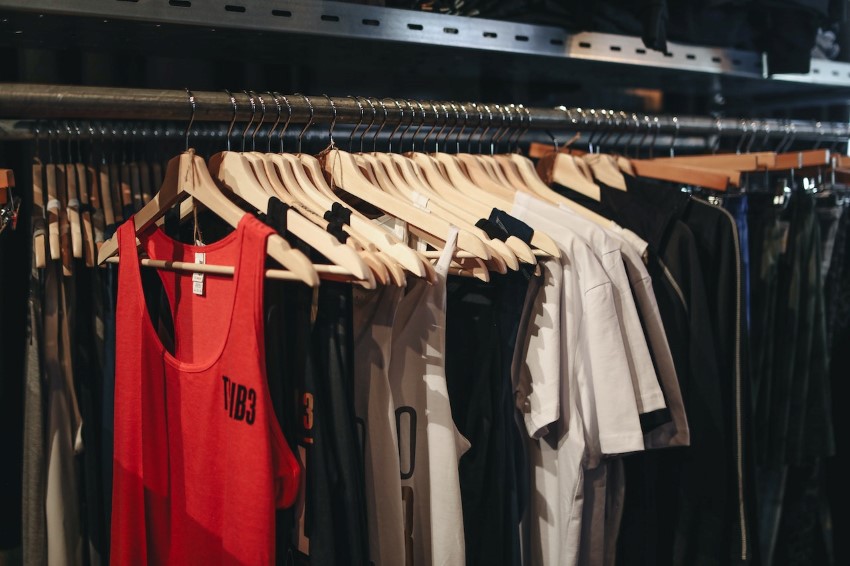Sourcing Suppliers and Inventory Management for Trendy and High-Quality Clothing: A Comprehensive Guide

Table of Contents
ToggleThe Importance of Reliable Suppliers and Efficient Inventory Management
In the competitive landscape of the fashion industry, having a steady supply of trendy and high-quality clothing items is crucial for success. However, achieving this requires more than just creating stunning designs. It involves establishing a robust network of reliable clothing suppliers and implementing effective inventory management strategies. This guide will delve into the intricate process of finding trustworthy suppliers, mastering the art of negotiation, and seamlessly managing your inventory to ensure a consistent flow of fashionable products to your customers.
A) Finding Reliable Clothing Suppliers
1. Online Platforms and Directories
Utilizing B2B Marketplaces: Alibaba, Global Sources, and Four-Source
In the digital age, online B2B marketplaces have become a goldmine for discovering potential clothing suppliers. Platforms like Alibaba, Global Sources, and Four-Source host an array of suppliers from around the world. To leverage these platforms effectively, start by creating detailed supplier profiles that highlight your requirements, from product specifications to quantity needs. Comparing quotes and offers from multiple suppliers allows you to make informed decisions. However, exercise caution and verify supplier credentials before finalizing any deals to ensure legitimacy.
2. Navigating Industry-Specific Directories
For a more targeted approach, consider exploring industry-specific directories dedicated to the fashion and textile sectors. These directories provide a curated list of suppliers, making it easier to find those specializing in clothing production. Researching the reputation and reviews of potential suppliers within these directories can offer insights into their track record and product quality.
3. Trade Shows and Exhibitions
Building Connections at Fashion Trade Shows: Fashion trade shows provide an invaluable opportunity to connect with potential suppliers face-to-face. Attend industry-specific events like Apparel Sourcing Week or MAGIC to not only network with suppliers but also gain insights into emerging trends and designs. Engaging in meaningful conversations and requesting supplier information at these events can lay the foundation for future collaborations.

Exploring Garment Fairs and Expos: Dedicated garment fairs and expos, whether regional or international, showcase a wide range of clothing suppliers under one roof. This concentrated environment allows you to evaluate various suppliers’ offerings and strike up conversations with representatives. Additionally, displaying your own product samples at such events can attract suppliers and initiate discussions.
4. Networking and Referrals
Leveraging Professional Networks and Associations: Joining professional networks and industry associations focused on fashion and business can provide access to a pool of potential suppliers. Online forums, social media groups, and local meetups offer platforms for engaging with suppliers and fellow entrepreneurs. These networks can also serve as avenues for seeking recommendations on reliable clothing suppliers.
Seeking Recommendations from Peers and Industry Experts: One of the most valuable sources of information can be your peers and industry experts. Tap into their experience and knowledge by asking for referrals to suppliers they have successfully worked with. Learning from others’ successes and challenges can help you avoid pitfalls and streamline your supplier selection process.
B) Negotiating Deals with Suppliers
1. Research and Preparation
Understanding Market Prices and Trends: Before entering into negotiations, conducting thorough market research is essential. Gain an understanding of average industry prices and identify any trends that might affect pricing. This knowledge empowers you to negotiate from an informed standpoint.
Identifying Your Specific Needs and Volume: Clearly defining your requirements, such as order quantities and product specifications, enables you to communicate effectively with suppliers. Whether you need bulk orders or smaller sample orders, articulating your needs ensures both parties are on the same page.
2. Effective Communication
Building Long-Term Relationships: Successful negotiations go beyond a single transaction. Building long-term relationships with suppliers can lead to mutual trust and loyalty. Regular communication, updates on your business’s progress, and even loyalty programs or incentives can foster strong supplier relationships.

Clear Articulation of Expectations: Establishing clear expectations from the outset is vital for a smooth supplier relationship. Define quality standards, delivery timeframes, and potential challenges. Addressing these factors upfront minimizes misunderstandings down the line.
3. Quantity, Quality, and Price
Bulk Ordering vs. Sample Orders: Deciding between bulk ordering and sample orders depends on your business strategy. Bulk orders often come with discounts but carry higher risks. Requesting samples allows you to assess product quality firsthand before committing to larger quantities.
Quality Control Measures: Maintaining consistent product quality is paramount. Implement quality control measures such as inspections and product testing. Collaborate with suppliers on quality assurance certifications and improvement plans.
Price Negotiation Strategies: Negotiating prices requires a strategic approach. Seek competitive pricing while also considering the supplier’s perspective. Bulk order discounts, long-term commitments, and win-win solutions can lead to favorable deals.
C) Managing Inventory Effectively
1. Demand Forecasting
Analyzing Historical Data and Trends: Past sales data and trend analysis are valuable resources for demand forecasting. Identify patterns in consumer behavior and account for seasonal fluctuations. This data-driven approach enhances accuracy in predicting future demand.
Considering Seasonal Fluctuations: Fashion is often influenced by seasonal trends and events. Adjust your inventory levels to align with peak demand periods and anticipate lulls. Factoring in holidays, festivals, and other occasions helps prevent overstocking or understocking.
2. Implementing Inventory Control Systems
Just-in-Time (JIT) Inventory Management: JIT inventory management aims to minimize holding costs by ordering inventory just in time to meet customer demand. Real-time inventory tracking and agile responses to demand changes are central to this approach.

Automated Inventory Software: Automated inventory software streamlines the management process. Centralized monitoring, automated reorder triggers, and integration with your sales platforms provide a holistic view of your inventory and streamline reordering.
3. Supplier Collaboration
Sharing Sales Data for Demand Projections: Transparent communication with suppliers can optimize inventory management. Share your sales data with suppliers to collaboratively project demand. This ensures timely production and replenishment, reducing stockouts.
Coordinating Reorder Points and Lead Times: Aligning supplier lead times with your reorder points prevents disruptions. Setting optimal reorder points based on historical sales data and factoring in supplier lead times ensures a seamless inventory replenishment process.
D) Ensuring Consistent Supply of Trendy and High-Quality Clothing
1. Diversified Supplier Base
Reducing Dependency on a Single Supplier: Mitigate risks by diversifying your supplier base. Depending solely on one supplier increases vulnerability to disruptions. Cultivate relationships with multiple suppliers to ensure continuity even in the face of challenges.
2. Regular Performance Evaluation
Assessing Supplier Reliability and Product Quality: Continuously monitor your suppliers’ performance. Evaluate metrics such as on-time deliveries, product quality, and customer satisfaction. Regular quality audits and feedback mechanisms maintain high standards.
3. Adapting to Changing Trends
Flexibility in Design and Product Range: Collaborate with suppliers to analyze emerging fashion trends. Stay agile by quickly incorporating new designs into your product range. Experimenting with limited runs allows you to capitalize on short-term trends.
Quick Response to Emerging Fashion Trends: The fashion industry is evolving rapidly. To stay competitive, adopt quick response strategies. Rapid prototyping, agile production processes, and dynamic supply chain adjustments enable you to respond promptly to emerging trends.
E) Risk Management and Contingency Planning
1. Buffer Inventory
Safety Stock to Counter Supply Disruptions: Buffer inventory acts as a safety net against unexpected disruptions. It protects against sudden spikes in demand or supplier delays. Calculating the appropriate buffer levels requires a balance between risk and cost.
2. Alternate Suppliers
Identifying Backup Options: Pre-qualify alternative suppliers in advance. Maintain relationships with these backups even if you aren’t currently working with them. Ensuring their compatibility with your quality standards ensures a smoother transition if needed.
3. Emergency Response Plan
Dealing with Unforeseen Supply Chain Disruptions: Establish an emergency response plan for worst-case scenarios. Collaborate closely with suppliers to solve problems promptly. Develop backup transportation arrangements and communicate transparently with customers to manage expectations.
Conclusion
Sourcing reliable clothing suppliers and managing inventory effectively are the cornerstones of a successful clothing business. By meticulously selecting suppliers, honing your negotiation skills, and implementing agile inventory management strategies, you can confidently offer trendy and high-quality clothing items to your customers. Remember that the fashion landscape is dynamic, requiring adaptability, communication, and strategic planning to thrive. With these principles in mind, you’ll be well-equipped to navigate the challenges of the fashion industry and achieve sustained success.





